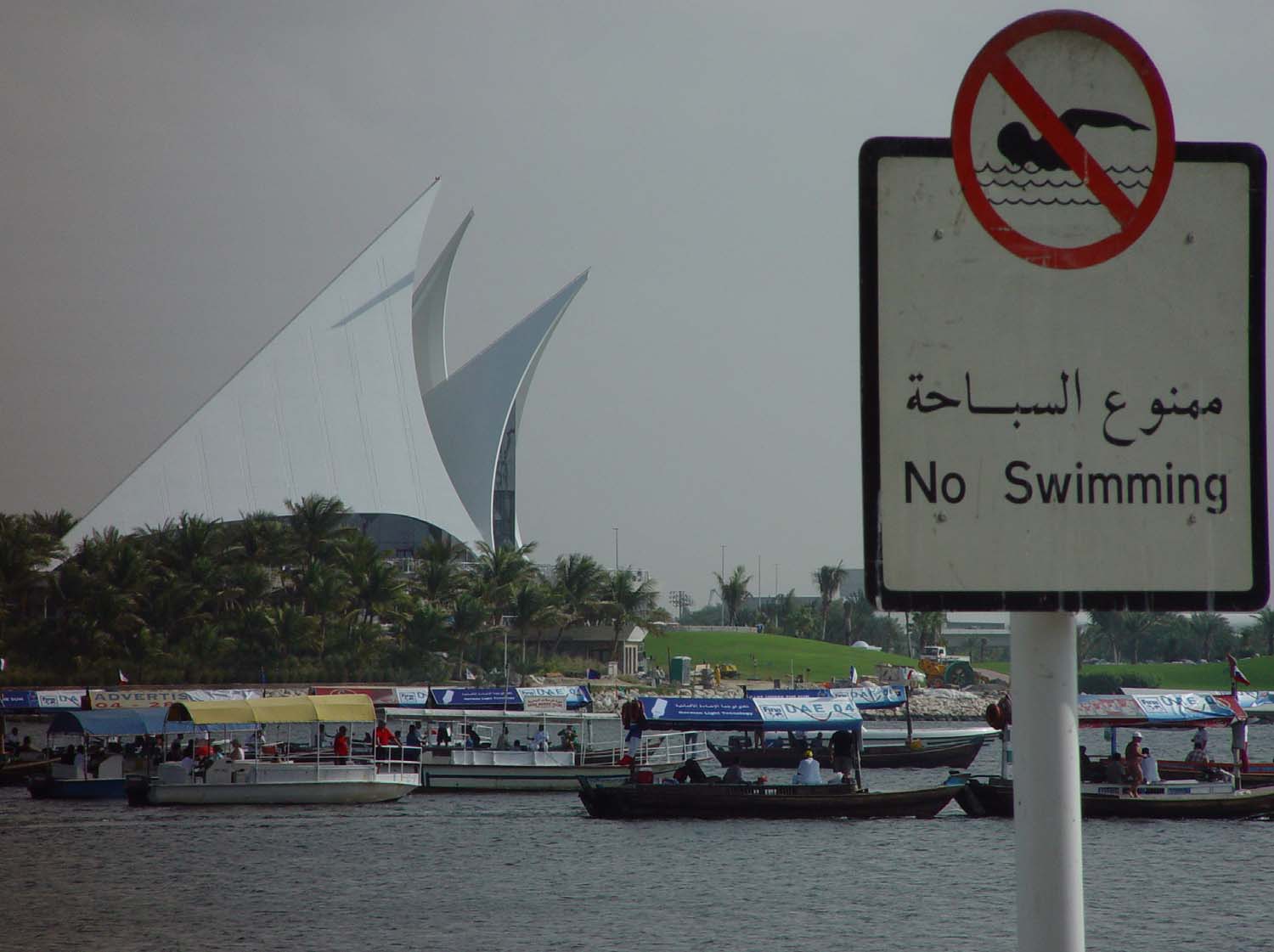
Microsoft powerpoint - 2006 sports medicine in open water swimming.ppt

Sports Medicine in Open
Family Practice and Sports Medicine
Richmond, Virginia
National Team Physician 1996 – present
Chair Asthma and Diabetes Task Forces
Member IAQ Task Force
Doping Control Officer
Chair, FINA Medical Congress 2004

Open Water – the Challenges
• Water – "It's alive!"
• "Things are swimming in
• Water – "It's too cold!"
• Water – "It's too hot!"
• "Something touched me!"
• Water – "It's moving!"
• "Feeding? What is that?"
• Water – "I cannot see
• "What kind of food?"
• "I cannot see the finish
• Water – "Something is
• "I got sand on me!"






• Convection – The transfer of heat from
the movement of air or water across the
body when the temperature of the
water/air is cooler or warmer than the
• Evaporation – the conversion of liquid to
gas, as best demonstrated by sweating.
• Radiation – The heat transfer from
electromagnetic waves either to or from the
body to an object that is not in direct contact
with the body, e.g. sunshine.
• Conduction – The transfer of heat from a
warmer to a cooler object that are in direct
Note that many of these are often in combination
increasing the impact on the athlete.
Hypothermia – Mild
(Two Levels of Severity)
• Shivering and impairment • Shaking, shivering, mild
to perform coordinated
impairment of central
nervous system with slow
• Basic treatment: Simple
thinking and speech
re-warming by blankets
(solar) and removal from
• Basic Treatment: Same
the exposure (can wrap
as prior but will take
in towels and cover with
longer to reverse.
sand if removal is not
Consider warm shower
and watch closely.
Hypothermia – Moderate
• Shivering slows down and • Prevention of further heat
stops, with profound
slowing of mental
maneuvers as prior. No
function. Confusion may
aggressive re-warming
include hallucinations and
attempts since this results
paradoxical undressing.
in shunting cold blood
Muscle rigidity with jerky
into the core and may
motions, irregular heart
further drop the core
temperature. Evacuate,
where warmed IV's, etc.
will be considered.
Hypothermia – Severe
• Coma, falling blood
• Time is of the essence
and this is a true
threatening cardiac
emergency. Evacuate
and protect from
further heat loss.
Hyperthermia – Heat Edema
• Swelling of hands and
• Resolves spontaneously
over several days of
acclimatization unless
there are problems with
renal function or there
are medications being
used for underlying
• See ‘Acclimatization'
Hyperthermia – Heat Syncope
• Dizziness to the point • Supine position with
of fainting in the
legs elevated, cool
(not iced) liquids and
athlete. This shows
resting in a cool
up typically when the
athlete stands up
• See ‘Acclimatization'
quickly, usually in a
state of dehydration.
Hyperthermia – Heat Cramps
• Painful muscle cramps
• Rehydration and attention
to electrolytes, and
massage. If unsuccessful
be attentive to sodium
content in blood as well
as other electrolytes.
• See ‘Acclimatization'
Hyperthermia – Heat Exhaustion
• Fatigue, weakness,
• See prior recommendations
uncoordination, mild
• Protection from further
confusion, agitation, headache,
sweating, nausea, vomiting,
• Spray with lukewarm water in
diarrhea, muscle pain with
a setting of cooling fans, cool
oral rehydration.
• Body temp (core) is less than
• Removal to an emergency
facility where advanced
treatment is available and
hyponatremia can also be
Hyperthermia – Heat Stroke
• Dry – Skin is dry and very
• Medical emergency
warm with profound confusion,
necessitating immediate
loss of coordination and other
transfer to an emergency
CNS symptoms including
facility. There gradual central
seizures, coma, hallucinations.
cooling will be conducted with
• Wet – Less common with
attention to potential damage
profuse sweating – otherwise
to cardiac, CNS, renal,
gastrointestinal, hematological,
Hyponatremic Collapse
• Long distance events
• Medical emergency that
typically with loss of
cannot be evaluated or
central nervous system
treated at the site –
function, ranging from
transport immediately!
decreased coordination
• Water intoxication and
and verbal capacity to
acclimatization are
frequently at the center
of this medical event,
though other underlying
medical conditions have
to be considered.
All athletes vary in their ability to tolerate
cold or heat; thus their duration of
accommodation varies. This can also be
affected by medications or underlying
medical issues.
• Layered swim caps (competition rules)
• Lanolin and other coating (helps impact but does
not change heat loss)
• Temperature of liquids consumed before and
during the competition/training
• Exposure to high salinity – nausea, vomiting
(electrolytes), swelling of face and tongue
• Prevention: Use SPF of 40 or more (debate re:
how much difference there is above 40) applied
every 4 hours with some exception of Bullfrog
and Zinc Oxide (attention to PABA sensitivity)
• Basic Treatment: Avoidance of further injury via
sunscreens and application of lubricants
including 100% Aloe and Lanolin. True sun
poisoning results in needing oral steroids and
will eliminate the athlete from competition.
• Not uncommon due to the intensity of the
sun as well as reflection off of the water
with frequent sighting.
• Symptoms: Tearing and burning• Avoidance: Mirrored goggles• Basic Treatment: Liquid tears without
Chafing is set up by prolonged exposure to
water, salt, and the variable stroke
patterns caused by wave action.
Variances in stroke inherent with the
athlete can be an underlying risk. It is a
true laceration, prone to infections with all
the complications.
• Common sites: suit lines, • Prevention: Lubricants
shoulder (caused by
such as lanolin, Vaseline,
breathing patterns), arm
Body Glide, Bag Balm,
pit, inner thighs, back of
etc. (Applied by staff,
• Basic Treatment: Topical
antibiotics that have anti-
Staph activity and further
protection (avoid
NeoSporin, try Bactroban)
Critters that Bite and Sting!
Things that Float
Examples: Jelly fish, Portuguese Man-O-War, Sea lice
• Symptoms: Localized pain,
• Basic Treatment: Spray with
searing in nature, potentially
White Vinegar as soon as
producing a neuropathy,
possible. Also may consider
nausea, vomiting, hives,
Adolph's meat tenderizer. Do
localized red spots (Sea lice
not rub the site, since this will
are not imbedded!).
release more of the contents
of the imbedded darts.
• Sea lice: Lightly apply rubbing
• Severe life threatening allergic
reactions: Epi Pen, which will
result in disqualification of the
Critters that Bite and Sting
• Consider the expected (sharks, rays, and
turtles) but also anything that is brightly
colored ex. Lion Fish
• Cardinal Rule #1 If it swims up to you, it
is not afraid of you! That is a bad thing!!
• Cardinal Rule #2 If it is brightly colored,
it has no reason to hide! This is also a
Critters that Bite and Sting
……….and one more to worry about……….
Critters that Bite and Sting
Things that Slither and Crawl
Ex. Sea snakes, venomous shells, octopus (spotted)
• Cardinal Rule #3 – If it is pretty – Do not
• Cardinal Rule #4 – If it is a shell -
Somebody is probably at home.
• Basic Treatment: All bites from anything in
this category requires emergency
treatment at a medical facility.
Critters that Bite and Sting
Things that Sit Still
• Symptoms: Burning and stinging with a
localized rash and hives
• Basic Treatment: Like jellyfish stings, the
mechanism of injected barbs is similar,
thus treatment with sprayed white vinegar
and avoidance of rubbing
The topic of feeding during races can raise
medical issues such s what, when, and
how often. There are as many theories as
to the best approach as there are athletes
and coaches but some basic principles
apply to all.
• Rule #1 – The longer the race, the more
frequently the athlete should feed to
sustain ‘fuel in the tank'. Frequencies of
every 15 – 20 minutes are not uncommon.
• Rule #2 – The longer the race, the earlier
the athlete should feed.
• Rule #3 – Plan the feeding what, where
and how, remembering the 3 G's.
• Rule #4 – Use timed intervals for feeding not
demand intervals. Once the athlete knows that
they need food or water it is too late.
• Rule #5 – The fuel that you consume will not be
available immediately. Thus, plan the sequence
of feedings i.e. carbs early in the race with more
water later. Some athletes prefer their carbs in
gel or solid forms.
• Rule #6 – Practice feeding! The athlete
needs to be accustomed to taking in
nutrition during practice/races as well as
working with feeding techniques with a
feeding extension device. The feeding
station may be a dock or boat (stationary
• Rule #7 The athlete selects the flavors and
brings them to the competition.
• Rule #8 The temperature of the fluids is a mirror
image of the environmental temperature.
• Rule #9 Nothing replaces proper hydration and
nutrition prior to the start of the race. If the
fuel tank is low prior to the start you cannot
catch up to your needs during the race.
• Rule #10 - Coaches may not consume the
nutrients until the athlete is finished!
Thank you for your attention!
I would like to thank all of the trainers
and coaches that I have traveled with over
the years. A considerable amount of this
presentation is from all that I have learned
fro them. Every trip has been a give and
take of information that is constantly
changing as open water swimming moves
to the forefront as a new Olympic event.
Source: http://www.usaswimming.org/_Rainbow/Documents/1906942a-e7cf-44e8-a4ca-c1b2fd6b7e00/Sports%20Medicine%20for%20Open%20Water.pdf
For the use of an Registered Medical Practitioner or a Hospital or a Laboratory only USE IN SPECIAL POPULATIONS Teratogenic EffectsPregnancy Category B: Teratogenicity studies have been performed in animals. Brimonidine tartrate was not teratogenic when given orally Rimoflo ™ Soft during gestation days 6 through 15 in rats and days 6 through 18 in
management arrangements for victorian mangroves and coastal saltmarsh Management arrangements for mangroves and coastal saltmarsh are complex because of the occurrence of these vegetation types within the coastal zone, an area covered by a multiplicity of policies, statutes and by-laws and with diverse international, national, state and local influences. That complexity is further enhanced by the number of government agencies and non-government organisations that play a role in the planning and management of the coastal zone which encompasses mangrove and coastal saltmarsh environments.












